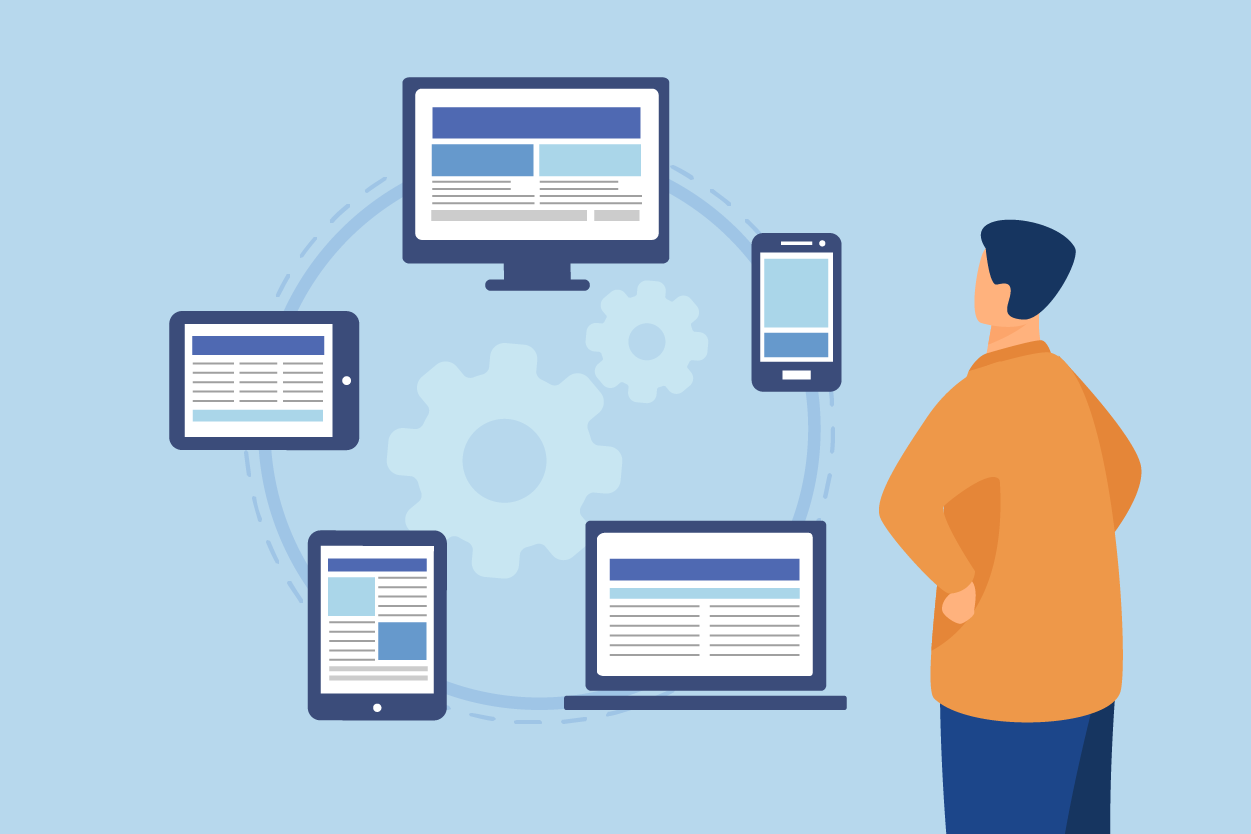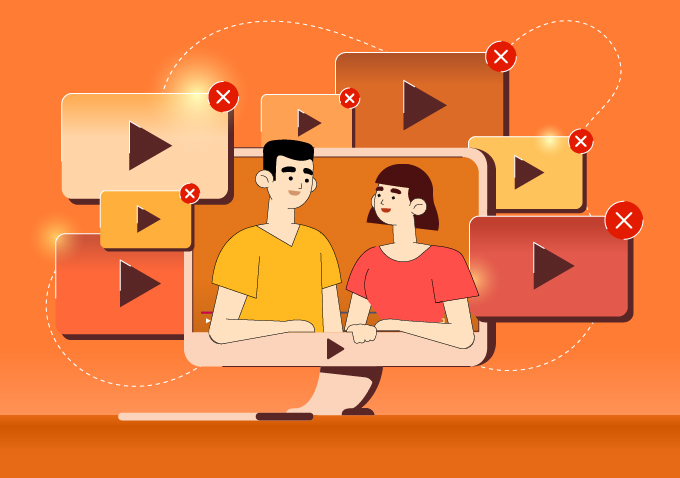

The life of a tech-taker

After a year of tech virtualisation like nothing we’ve seen before, are we any better off?
Technology no longer supplements real-life interactions. Roles have been reversed for a good part of this year (2020). It feels as if reality now supplements our virtual interactions.
With social distancing and remote working, these digital tools have become an indispensable part of our lives. And for many, there’s not just one but every piece of virtual meeting software to learn as many of us become ‘tech takers’ — the vendors who have to align to their clients’ preferred choice of tech.
Mastering multiple tech
For us, onsite video production ground to a complete halt for a few months when the government ordered everyone to stay in to curb the spread of the virus. Of course, scheduled live events and talks weren’t going to be completely dropped, not after all the work that went into the planning process — they just went virtual instead.
The show must go on, as they say, and so we too have moved … to hosting webinars and filming remotely. Yes, our producers (Hello Alex!) are webinar wizards now.
Was it easy? Not at all. In fact, it was a steep learning curve even for our own tech guys. A cry of frustration here, a sigh of exasperation there, and even a few tears were shed when the office wifi went down in the middle of a live broadcast (yes, really).
The biggest challenge came when we had to school ourselves in how to use the various platforms. Our corporate clients like Microsoft and Google have their own video conferencing platforms, and working with them means having to use their propriety software.
We had to experiment with them all, to find out what worked well, what features we needed, where the platforms came up short. It wasn’t just Zoom, or Google Meet, or Skype. There was also WebEx, Microsoft Teams, BlueJeans, Streamyard…the list goes on.
In the past few months alone, Click2View has opened an account on nearly all of those platforms. We had to meet our clients where they were – as many of the tech takers are finding.
The struggle to keep up
This ability to adapt quickly has long been a characteristic that makes or breaks businesses, and right now it’s more evident than ever. According to Microsoft CEO Satya Nadella, “We’ve seen two years’ worth of digital transformation in two months.”
With email being the only platform to have seen reduced usage during the pandemic, video conferencing could become the most popular business communications tool. New video conferencing services are coming out everyday, and older platforms are rolling out new features in a bid to outdo one another. There is no denying that we are inching towards an even greater tech overload than we had before the pandemic.
Multiple platforms, browsers & machines
It’s no surprise there’s been a surge in purchases of Mac computers driving Apple’s revenue even higher. We’ve found doing webinars and virtual events some of the setups at home and in the office often require two or three machines, sometimes more!
It’s constant innovation on a time crunch, on multiple accounts.
“Sometimes I have multiple clients and vendors using the same application, so I have taken to using different browsers to access different accounts to ensure there is no accidental crossover,” says Neal Moore, independent consultant and CEO of Moore’s Lore Media. (A co-founder of Click2View.)
Generational issues
There are a multitude of tech systems, software and platforms available to choose from. While it’s good to have options, it’s not always easy to navigate your way around them if there are different levels of digital literacy at your workplace.
These days, it’s not rare to see up to five different generations working together. This means that companies should consider the various needs and experiences of their inter-generational employees.
In a survey of workers from 7,385 companies, 25% feel overwhelmed with the technology needed to keep in touch with friends, family and colleagues. In particular, those born pre-1945 are the ones who seem to be struggling the most: 50% of them felt overwhelmed with having to use so many products to stay connected.
An information overload
With the average adult spending about 34 years staring at screens, it seems like this tech overload is paving the way to more problems relating to the way we absorb and process information. Technology has definitely made information more accessible. Tech also functions as a tool that can help people better organise their lives and connect with others. But it is a double edged sword.
Being constantly bombarded with things to keep track of has its downsides: research has revealed that 65% believe all the information in their devices is overwhelming.
Trying to stay on top of this means multitasking, and humans aren’t that great at juggling multiple tasks. As much as multitasking has been considered a good thing in the past, in fact, our brains aren’t really designed to do this. This is especially so when we’re toggling between screens. In fact, researchers at the University of Copenhagen have found that such multi-tasking lowers IQ because it trains the brain to be disorganised.
This tech-induced multitasking can even cause forgetfulness. 61% of respondents in another study admitted to not remembering things as well when they multitask. More than one in two went on to say they’re always or often multitasking.
There is a limited amount of things we can do in our day, and having all this tech around us might not always be the best solution. And if we’re talking about video conferencing platforms specifically, how can we miss mentioning Zoom fatigue?
Used to describe the the tiredness, stress or burnout associated with overusing virtual platforms of communication, Zoom fatigue is one of the buzzwords of 2020. It’s a phenomenon that’s closely associated with the pandemic.
Will the new normal really be everlasting?
And while virtual communications are an alternative for us to stay in touch, it’s not quite the same as physical human interactions. Even something as deeply personal and as important as attending church service doesn’t have much of a hold when it’s brought online.
While there has been a general trend in the United States of the younger generations moving away from regular church attendance, there has been a much sharper decline during the pandemic.
In fact, one in five churchgoers said that they have never attended service, either in person or digitally, during the pandemic. While not attending church services in person can be attributed to health concerns during the pandemic, not attending virtual church (as an alternative) hints at the fact that perhaps something is absent in these digital services that might have caused this drop off in interest in religion.
Laura Dudley, a behaviour analyst at Northeastern University says, “It’s important to note that while we are sharing a conversation, we are not sharing physical space together. A piece of the puzzle may be missing for you, so to speak.”
Looking ahead
In a world fraught with too much tech and too much information, what’s the way forward?
For content marketers like us, staying afloat means we need to create work that is fresh and engaging in a saturated marketplace. How do you make sure your content stands out in a sea of others just like yours?
Half of it lies in making your content sticky. The other half lies in creating omni-channel content. With so many ways to consume information, you’re missing out on a large chunk of the consumer experience if you’re just focused on delivering on a single channel. Give your audience the choice to consume the way they like – don’t force them to be ‘tech takers’.
The key to acing these two strategies is to really understanding your audience. Figure out what works, and scrap the ideas and methods that don’t — there is no point in flogging a dead horse.
And when it comes to video conferencing or webinars, everything lies in the strength of your content. While a physical audience may be more inclined to attend a long keynote presentation, the same cannot be said for online viewers.
“It’s not that audiences don’t have the attention spans, it’s that more of their senses can be engaged in the physical world, which means it is easier to capture and keep their attention, because there are also fewer distractions. Online you only have sight and sound to engage, and yet the audience is always just a click way from something more interesting,” says Neal.
Freedom of choice… or not
In a way, the multitude of tech options and information available has created a space where we are constantly trying to keep up.
From vendors having to master every video platform available, to the not-so-digitally-savvy struggling to use numerous devices to stay connected, it’s natural for us as humans to feel overwhelmed.
If there’s something this whole experience has shown, perhaps it’s that freedom of choice might not be so free after all.
Through this pandemic, we’ve done the necessary and kept up to date with the technology of sharing content. Need some help? Chat with our CEO Simon Kearney at [email protected] today.
Read more from Click2View:
- Omni-channel marketing is the way into the future.
- A whole list of content marketing buzzwords that you need to know.
- What makes content stick out in the minds of your audience?
Sign up to our newsletter for a weekly update on the latest content marketing news. Don’t forget to subscribe to our YouTube channel too!
Click2View is Southeast Asia’s premiere full-service independent B2B content marketing agency servicing clients like Microsoft, Google, Visa, Prudential, and the Lee Kuan Yew School of Public Policy.








